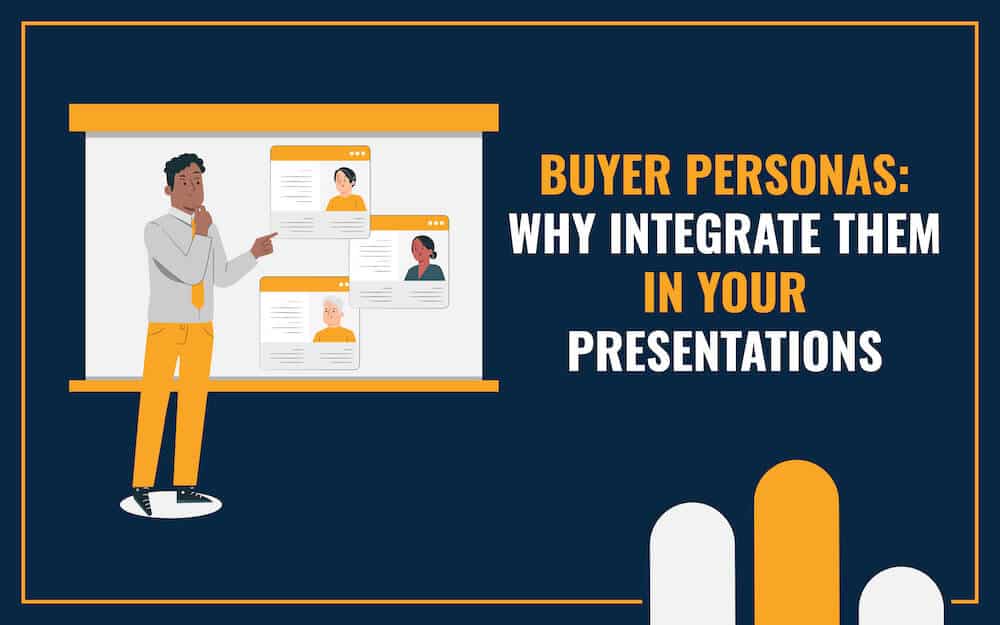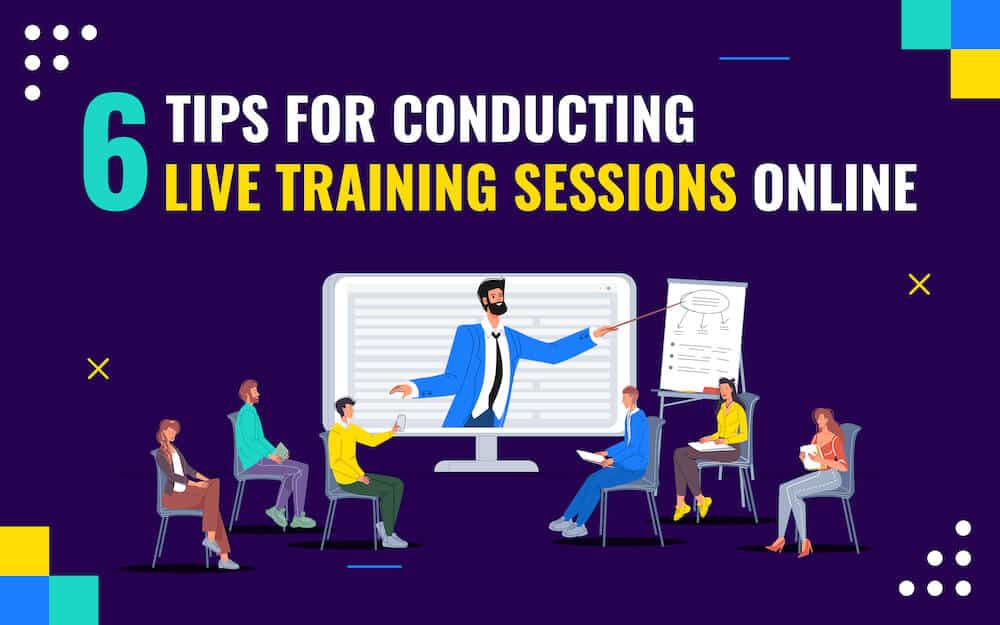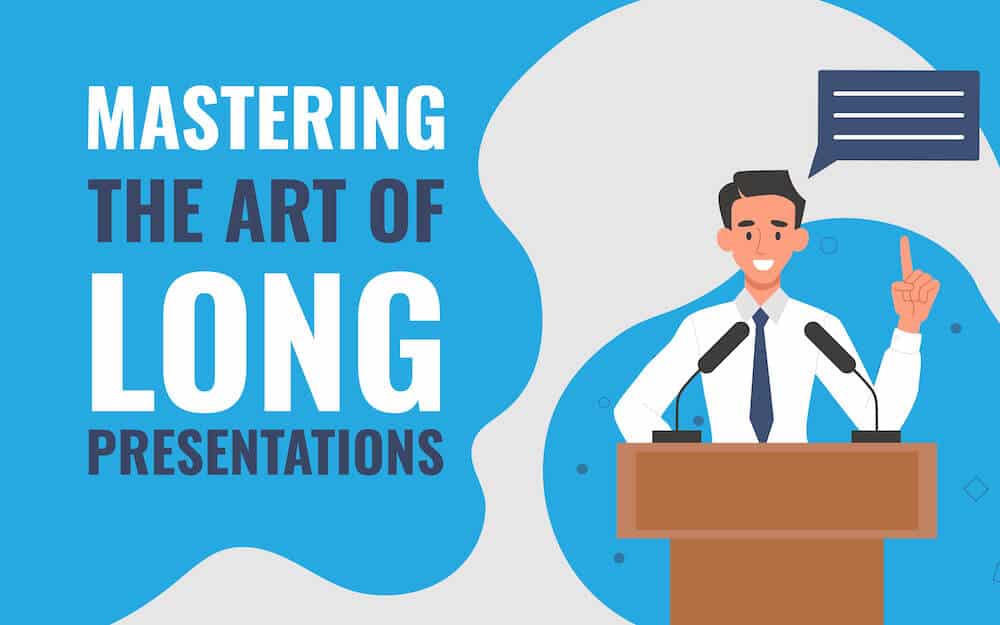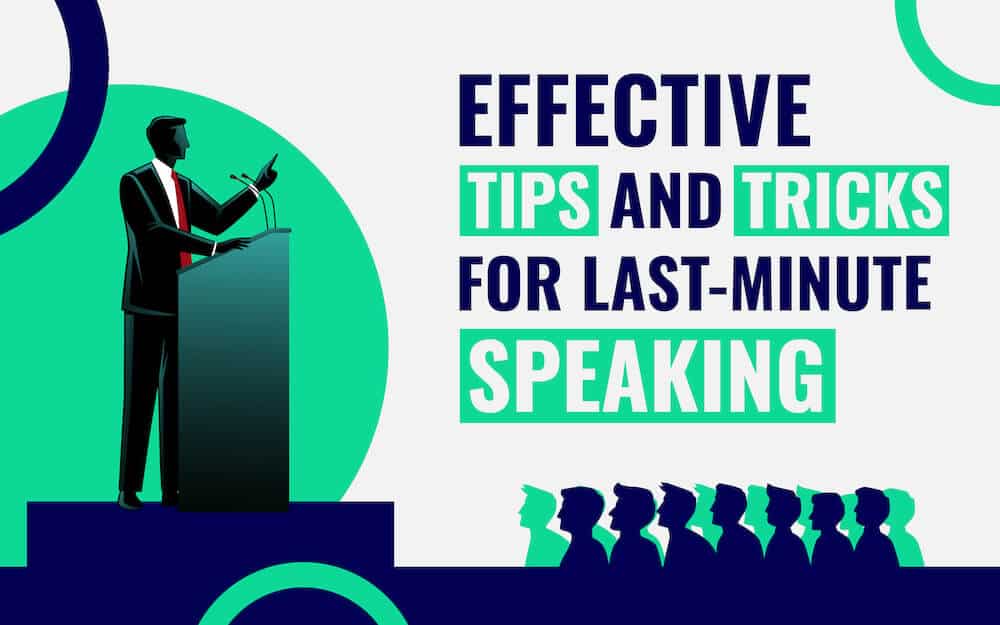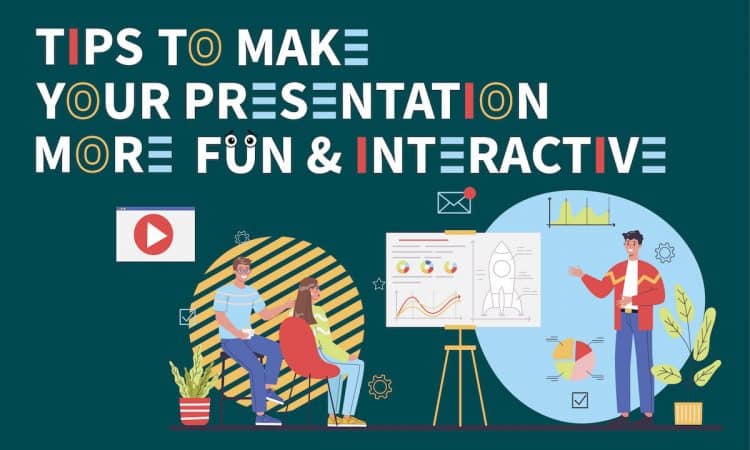
It’s a no-brainer as to why a presentation should be engaging. Of course, you wouldn’t want your audience snoozing with eyes open in the middle of your talk.
Whether you are presenting live or have a presentation embedded in your website, creating an engaging presentation is a must if you want to get your message across. As you might have compelling content, but if you don’t present it right, a lot of it can go unnoticed.
And let’s face it, having an ocean of bored faces in front of you wouldn’t help you as a presenter as well. It will only make you nervous and talk faster to get over with the presentation quickly.
Engaging your audience isn’t that tough. Adding elements of interaction is all you need (of course, with good relevant content) to keep people hooked to you. We have compiled some sure-shot ways to get it done right. But before that, let’s find out what an interactive presentation is.
What Do You Mean by Interactive Presentation?
As we all know, we learn and retain better by being a part of something rather than being just a watcher. An interactive presentation, unlike a static, gives your audience a chance to get involved in your talk. Your audience might be visual or auditory learners, and adding interactive elements, such as polls, quizzes, chat/discussions, will help you target as many senses as possible to drive engagement in your content.
Why Should Your Presentation Be Interactive?
There are a lot of benefits you can reap by incorporating interactive elements in your presentation. Let’s find out why you should work on interaction.
a). Build Active Participation
It is easy for us to drift away, and everyone knows about the short attention span. If you don’t involve people, chances are you see them looking at their screens, dozing off, or speaking to neighbors. If that happens, it will negatively impact you as a speaker too. Your presentation should be purposeful and properly staged/structured as if a direct conversation between you and the listener.
b). For Better Retention
Adding different interactive elements will keep your audience constantly alert and engaged with your presentation. They will be active and better remember the content of your presentation. According to research, conversational presentation helps in better retention, with participants reporting the two-way presentation helped them engage more.
c). Helps You Build a Connection with People
If you want to influence people or drive them to take some action, building connections is imperative and the first step in doing so. Your audience needs to connect with you and trust you in some way for some fruitful action eventually. Things like icebreaker games, humor, personal anecdotes, and one-on-one interaction will help you form that connection.
d). Less Workload
It might sound funny to you, but it’s true! When you involve your audience through questions/quizzes or activities, you will share your workload with your audience, where they would also be a part of the presentation, meaning a little less work for you.
e). More Personalized
When you make your presentation interactive, you will also end up making it a little less general by involving individuals in your work. People are likely to be more focussed as they will feel a part of your talk. It will make your presentation more customized and purposeful.
13 Ways to Make Your Presentation Interactive and Engaging
There are different types of presentations with different purposes and goals (informational, inspirational, result-oriented), which influences the tools you can use to make your presentation fun. Pick and mix/match the ones that seem most relevant to your format and make your presentation stand out.
1. Icebreakers are Important
It is essential to build an initial connection whenever you get involved with new people. It creates a sense of ease in the environment and helps people open up to each other for further communication. If you are addressing a small group, you can easily go around and converse with people to create a positive environment. In the case of a larger setting, you can ask people to converse with their neighbors or have them answer questions for you or each other.
You can also go for fun icebreaker games and activities like asking people their favorites and best work moments, or create polls, etc. Have people prepare a list of topics or information they would like to learn and ask them later if they received what they were expecting out of the talk.
2. Share Tangibles
People use their auditory and visual senses when they watch and listen to your presentation. You can make the experience more memorable for your audience by targeting more of the senses, like using tangibles to reach their tactile senses.
Anything people can touch or hold will bring them more into your talk. You can hand out material like project reports, print out of slides, prototypes, maps/diagrams, handouts to take notes, etc. Share tangibles with people to incorporate some physical movement/activity in your presentation.
3. Address People by Name
If you have access to people’s names or know your audience, calling them by their names in the presentation works wonders. Addressing people with names might seem simple, but it’s a key strategy emphasized by various coaches in their tips for interactive presentations.
If your meeting isn’t that formal and allows you to have side talks or get input from the audience, you will have no issue calling people names. In the case of formal setup, you can still use the tactic by mentioning things like you received inputs from XYZ person or if you are talking about something that interests a particular person (calling their name).
4. Make Your Presentation a Discussion
It might seem a little more advanced compared to other ways and will require you to have in-depth knowledge of your content. Instead of delivering a one-way presentation, you take on the teaching role by posing relevant questions and giving people a chance to answer. You can move from person to person, adding your comments and insights to the responses and helping them have a better understanding. It will help people be engaged with your content and make the talk interactive. However, be comfortable enough with the topic at hand, on stage, and with managing the roomful of people for it to work.
5. Include Live Quizzes, Q/A, Polls, and Surveys
Host quizzes, Q&A rounds, live polls, surveys, etc., to help your audience interact with you. Learn about their opinion through the show of hands or divide them into groups for discussions. Organize Q&A rounds after every few slides where you can ask people what they think or if they have doubts. You can also enquire if they got to learn what they had expected through this interaction (an activity you got done in the icebreaking part of your presentation).
Interactive quizzes will help you improve your presentation by getting to gauge the knowledge your audience has and how well they can grasp the information you are relaying. Reward people to help them be more proactive and take part.
6. Go for an Immersive Experience
Incorporating elements that add a visual story or something that enables people to better relate to your words will enhance engagement in your content.
Create an immersive experience by adding elements like music/sound, live performances, walk-in exhibits, etc. You can also show the prototype of your product or demonstrate your service to help people see a clear picture. Bringing props relevant to your content will help people connect to your words.
Include your team members or people from the audience to create a skit or live demo. There are many ways to create an immersive experience. Think of ways in which you can use animations, GIFs, video clips, etc., to heighten the experience.
For instance, Bill Gates, in one of his Ted talks on mosquitos and malaria, released a swarm of live mosquitos in the audience. Scary? Yes. But it did catch a lot of eyeballs.
7. Share Your Presentation
One great way to boost interaction would be to give people more control by including them in your presentation. Share your presentation with the audience so they can navigate as and when they want. It will enable them to like or speak on anything while you deliver the presentation. People can view the slides on their smartphones and be a part for the entire duration.
It will unarguably give your audience a sense of autonomy and participation and keep you alert and engaged as a speaker, not going ahead with the linear flow of the presentation.
8. Include Humor in Your Talk
Humor works everywhere. It’s great as an icebreaker, eases the environment, and engages people with the content. And guess what; pick up some of the best talks and presentations, and you will find most of them feature humor in different degrees.
You don’t have to go for mindless humor, which doesn’t relate to the subject at hand. Rather, try to find things that are relatable to your topic. For instance, in his Ted Talk, filmmaker Morgan Spurlock asked his audience to name his talk (revealing the title at the end) and used humorous comments throughout the talk supporting his point.
9. Make Use of Technology
We use technology for anything and everything now. Making use of it in the presentation will help you up your game considerably. Rather than going for the same everyday slides, you can try a 3D demonstration to engage your audience.
It might seem a little challenging to use due to budget constraints or technical prowess. But these technological innovations are the future now, so it makes sense to incorporate them in your presentation too.
Pro Tip – It will help you get the visual engagement and interaction you seek and bring newness to your slides (since these technologies are not that common in presentations right now).
10. Embrace Storytelling
If you want people to really get attentive or retain information in the best way possible, take the help of storytelling. Your audience is likely to remember your data 22 times more if you weave it into a story. Even if your presentation covers a lot of data, facts, and figures, you can still use storytelling, incorporating it into someone’s or your personal anecdote.
Stories tap into people’s emotions, taking them on a journey with the storyteller and creating an immersive experience. Therefore, it is a great tool to involve people in your presentation entirely.
11. Don’t Go for a Linear Presentation
You can get creative and avoid going linearly in your presentation, i.e., from slide 1 to slide 2. See if your presentation will make sense if you go ahead non-linearly. To make that easy, connect your slides to a table of contents. It will also help you and your viewers navigate the presentation. Rather than going through slides one by one, viewers can choose which part they want to see and when.
Also, while talking, it will help you sense the environment and improvise accordingly (like which part to be delivered first and in what sequence). So, try to create slides with a link to each other.
12. Use Hashtags
Everyone uses social media to connect with people. If you are speaking at an event that already has a brand hashtag, you can encourage people to comment on social media using the hashtag. In case of a standalone presentation, create your hashtag to create a thread on social media, involving more and more people.
Using hashtags for your talk will help people connect later and spread it further to other connections (helping to popularize your content). People can also post bits and parts of your presentation online using the hashtag or pose questions throughout the presentation or later on. What’s more, with hashtags, you can also create competitions (online) on relevant websites.
13. Use Interactive Transitions and Animations
Using animations and interactive transitions is great for evoking curiosity in the content. You can incorporate animations and transitions in a lot of exciting ways, like animating different elements of your slide or creating seamless transitions by elements sliding in on their own on each slide. Add fun elements to your facts and figures (graphs, charts) by adding animation.
However, remember to be consistent and not clutter your presentation by going for different animations and transitions. Creating a similar look and feel in your slides is important for a coherent and professional presentation.
Conclusion
It is essential to have a properly structured presentation with quality, relevant content. But that is not enough to turn your slides into memorable ones. For that, you need to include factors that keep people interested throughout and not lose focus and interest. You can include the factors mentioned above to add fun and engagement to your slides. Incorporate methods that help you interact with your audience (as much as you can) with excellent content, and you are all set to steal the show.
